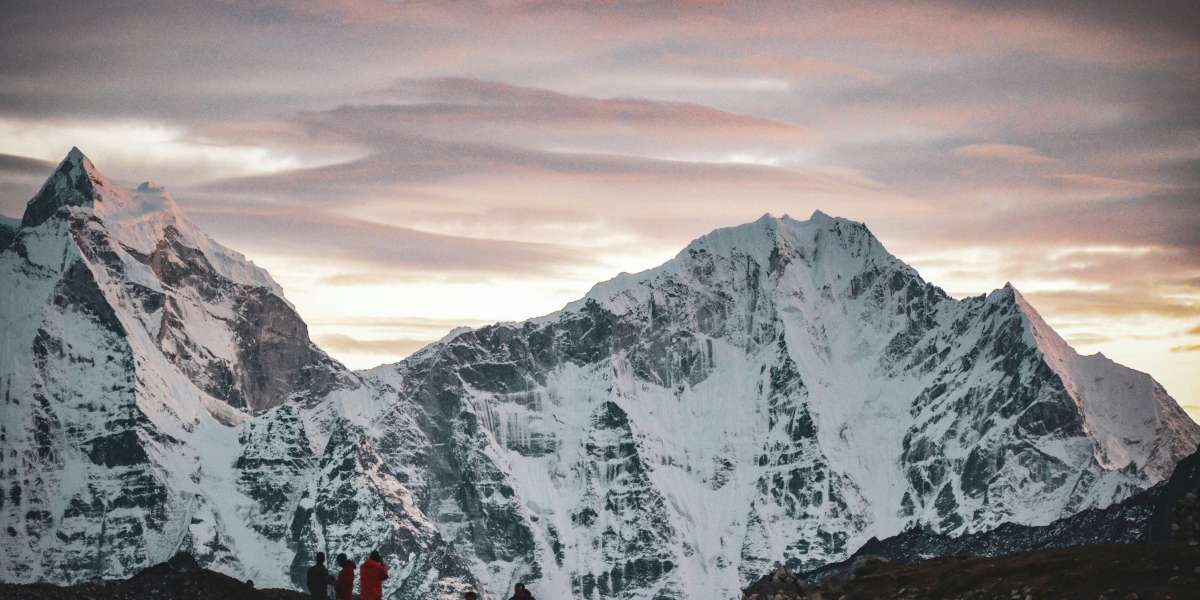When people ask me which climb left a mark on me, I always say Lobuche Peak. It’s not the tallest mountain in Nepal, but it packs everything a mountaineer hopes for grit, beauty, and those quiet moments that hit you harder than the altitude.
Lobuche Peak sits at 6,119 meters and is often overshadowed by Everest. But what makes this peak special is the mix of trekking through Sherpa villages and then shifting into full alpine climbing mode. It lies close to the Khumbu Glacier and not far from the route to Everest Base Camp, which makes the approach even more exciting.
The Trail to Lobuche
The journey began in Lukla, after a short flight from Kathmandu that always feels like an adventure itself. From there, I joined the classic Everest trail crossing suspension bridges, walking through pine forests, and stopping at villages like Namche Bazaar and Tengboche. Every corner of the trail gave me a reason to slow down and breathe in the mountains.
I had chosen to go with a local guide and a small team. This was not just for safety, but also for connection. My guide had years of experience and knew the terrain like the back of his hand. We shared laughs, hot tea, and stories under the stars. Going solo would have made the climb a lot riskier, especially on summit day.
Acclimatization and Training
Before heading to base camp, we spent extra days in Dingboche and Lobuche for acclimatization. We hiked to nearby ridges for better adaptation and practiced using climbing gear crampons, harnesses, ropes, and ice axes. This was where the trek transformed into a climb.
Even if you are fit, the thin air makes everything slower. A few steps feel like running a marathon. I learned to listen to my body more than ever.
Base Camp to High Camp
Lobuche Base Camp is located around 4,950 meters. From there, we moved to High Camp at about 5,400 meters. This stretch involved carrying our gear and navigating rocky terrain. It was cold, the wind howled all night, and sleep didn’t come easy. But the excitement for the next day kept us awake.
We went through a final gear check and had an early dinner. Most climbers sleep only a few hours before starting the summit push around midnight. The goal is to reach the top around sunrise and descend before the snow softens.
The Summit Push
Climbing Lobuche Peak felt like a mental game. We started in darkness, moving slowly under headlamps. The climb involved fixed ropes, steep icy slopes, and exposed ridgelines. At times, I doubted myself, especially when my legs ached and the wind picked up.
But when the first light hit the mountains and I saw Everest, Nuptse, Ama Dablam, and Makalu around me, it didn’t feel real. Reaching the summit was emotional. I didn’t cry, but my hands trembled not just from the cold but from the weight of the moment. All the tiredness faded. I was just standing there, quiet, with the Himalayas in every direction.
Coming Down
Descending was harder than I thought. The thrill of the summit had passed, and now I had to focus to avoid slipping or losing balance. Once back at base camp, I finally breathed with ease. We had done it. No altitude sickness, no frostbite—just memories and lessons that would stay for life.
What You Need to Know
If you are thinking about Lobuche Peak climbing, here's some practical advice:
Best time to climb: Spring (April to May) and Autumn (October to November) offer the most stable weather.
Fitness level: You don’t need to be a professional climber, but solid trekking experience and good physical fitness are essential.
Permit and gear: You’ll need a climbing permit and proper alpine gear. Most expedition companies provide this.
Go with a guide: For safety, route finding, and support, climbing with an experienced guide is the smartest choice.
Final Thoughts
Climbing Lobuche Peak changed me. It reminded me that strength comes from persistence, not speed. That being in the mountains is more about feeling alive than reaching a summit. And that Nepal is more than a travel destination it is a place that pulls you in and stays with you.



